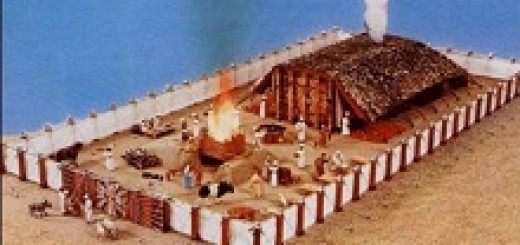By: Sholom Olensky
This week in the Torah:
Moses discusses the obligation to bring sacrifices only in the Holy Temple in Jerusalem, once it is built and forever after. That is the place which G-d chose to sanctify with His presence.
Maimonides:
In his Mishnah Torah, (Laws of the Holy Temple, Chapter 6 ) Maimonides rules that the Jerusalem Temple must be constructed so as to rise incrementally from level to level, in accordance with the incremental rises in stages of holiness.
Question:
The portable Sanctuary that Moses built in the desert was a flat structure. Why is the permanent Temple meant to be different?
Preface:
While Moses’ Sanctuary was meant to spread G-dly light in the atmosphere of the Jews’ sojourning, it was not meant to draw G-d’s presence into the physical geographical location intrinsically.
In the Jerusalem Temple however, G-d chose to reside on that space forever, in a way that His presence shall be intrinsic to the physical space.
Accordingly:
The Jerusalem Temple is meant to physically and structurally symbolize the rising gradations of holiness in the Temple. This is because there (as opposed to Moses’ Sanctuary in the desert) the physical is meant to be the amicable home for the spiritual; a place which lends its very character (physical structure and topography) to the Holiness that resides there, in its every detail.
Question:
In light of the above, should there not have been a much greater elevation to the Holy of Holies (the innermost chamber which housed the Ark which held the Tablets, the Torah) than the more exterior Sanctum, which was accessed every day? The Holy of Holies was accessed only on Yom Kippur, and, even then, only by the Kohen Gadol (the High Priest).
Explanation:
The steady rise from level to level throughout the Temple was because there is a comparative range between the lower levels and the higher levels of Holiness; so as that can be expressed by a specific elevation in height. The Holy of Holies, however, represents such a level of Holiness as that cannot be symbolized by any gradation of height. For, it represents the Infinite, while the levels outside of it are all finite (although lofty) and, therefore, within range of each other. Therefore there was no difference of physical height between the exterior Sanctum and the Holy of Holies
Lesson:
Each and every person is to strive to make themselves into a sanctuary for G-d. Even the Infinite is in the Divine Spark in the soul of man. However, since it is immeasurable due to its boundlessness, it sometimes lies reticent, going unnoticed. A firm resolution to live congenially with the Divine Spark in each and every one of us serves as a conduit for seeing the blessings of the boundless Divine in our lives.
(Based on Likkutei Sichos Vol. 29, Re’eh)






















